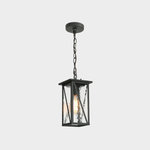Protect Your House From Winter Water Damage
Avoid costly repairs by learning to spot potential problem areas before water damage is done
When cold weather approaches, it's time to give your home's exterior a once-over to make sure water won't find its way indoors. There are ways to spot the problem areas on your home's exterior before a drip from the ceiling or a flooded basement alerts you. You just need to learn to think like water.
Even if water just overflows on the exterior and doesn't get inside the house, it can do some serious damage in short order. In this picture a scupper box channels water through a parapet wall that surrounds the roof. At some point in the past, overflowing water deteriorated the brick mortar in this area.
Following the downspout down to the ground, we get to another critical point for keeping water out of your house. Ideally a downspout goes directly into a rain leader or drainpipe that leads to the sewer.
If this isn't the case, it should direct the water as far from your foundation as possible, since the whole point of gutters is to keep water away from the house. If your downspout goes into a rain barrel, clean the screen and open the tap so that it doesn't fill up and freeze in the winter. Ideally, use a diverter to direct water away from the rain barrel in winter, when you don't need the water.
Following the downspout down to the ground, we get to another critical point for keeping water out of your house. Ideally a downspout goes directly into a rain leader or drainpipe that leads to the sewer.
If this isn't the case, it should direct the water as far from your foundation as possible, since the whole point of gutters is to keep water away from the house. If your downspout goes into a rain barrel, clean the screen and open the tap so that it doesn't fill up and freeze in the winter. Ideally, use a diverter to direct water away from the rain barrel in winter, when you don't need the water.
If your windows and doors are set flush with your home's facade, and there are no large roof overhangs to keep rain away, then you will be depending on proper installation and caulk to keep the water out. Proper installation depends a lot on the type of window and siding, but generally it includes head flashing that directs any water that gets behind the siding around the window, and weep holes at the bottom of the window wherever water could be trapped.
Other than checking for clogged weep holes, there isn't much you need to do to keep a properly installed window or door from keeping water out, other than making sure it closes tightly and checking caulk. Caulk doesn't last forever, and even though it is meant to expand and contract as the building materials around it do, gaps will open up. The type of caulk you use will depend on whether it will need to be painted and what materials it will need to bond to, but a few tips are universal. Remove old caulk that is not well bonded and make sure the surface is clean and dry before caulking.
High Design for the Downspout
Other than checking for clogged weep holes, there isn't much you need to do to keep a properly installed window or door from keeping water out, other than making sure it closes tightly and checking caulk. Caulk doesn't last forever, and even though it is meant to expand and contract as the building materials around it do, gaps will open up. The type of caulk you use will depend on whether it will need to be painted and what materials it will need to bond to, but a few tips are universal. Remove old caulk that is not well bonded and make sure the surface is clean and dry before caulking.
High Design for the Downspout
Foundation and Perimeter
Once you know your gutters will direct water away from the house, you should give the perimeter a thorough inspection to look for ways water might enter the foundation. Even if you can't see the way in, if water pools next to your house, it will find a way in, so make sure the grading at the perimeter slopes away from the house.
Unless you have a green roof, your roof is a big impermeable surface that sheds a lot of runoff; that's why your gutters need to direct a large amount of water away from the house quickly. Think of your property the same way: The more impermeable surfaces you have (with less opportunity for rain to sink into the ground), the more runoff you'll have, and all that water needs to go somewhere.
Driveway pavers such as these allow water to pass into the ground. Proper grading is still paramount, though. In a heavy rainstorm, a lawn is only a little more permeable than concrete, so make sure that water will run away from your house.
Once you know your gutters will direct water away from the house, you should give the perimeter a thorough inspection to look for ways water might enter the foundation. Even if you can't see the way in, if water pools next to your house, it will find a way in, so make sure the grading at the perimeter slopes away from the house.
Unless you have a green roof, your roof is a big impermeable surface that sheds a lot of runoff; that's why your gutters need to direct a large amount of water away from the house quickly. Think of your property the same way: The more impermeable surfaces you have (with less opportunity for rain to sink into the ground), the more runoff you'll have, and all that water needs to go somewhere.
Driveway pavers such as these allow water to pass into the ground. Proper grading is still paramount, though. In a heavy rainstorm, a lawn is only a little more permeable than concrete, so make sure that water will run away from your house.
Roof, Siding and Windows
We’ve tackled the big sources of water infiltration, so now it’s time to look at the small ones, which can still cause big headaches. Generally, we find out about these leaks only when we see a brown spot on the ceiling or a drip though the window header. But if you know what to look for, you might be able to catch problem spots before you have interior damage.
If you live where it snows, think about the water your house will make from that snow. Unless your home is superinsulated, the heat escaping from it will melt some of the snow before the sun does. When that melted snow reaches overhangs that are colder, it can freeze and create ice damming. This can pull gutters off and force water up under shingles — another good reason to make sure your attic is properly insulated.
Nobody likes to go outside in a storm, but it’s helpful to observe your house in dry conditions and when it’s raining hard to see how gutters and grading are working. After a snow, if you can see the roof, look for melting-snow patterns.
Month-by-month home maintenance checklists
We’ve tackled the big sources of water infiltration, so now it’s time to look at the small ones, which can still cause big headaches. Generally, we find out about these leaks only when we see a brown spot on the ceiling or a drip though the window header. But if you know what to look for, you might be able to catch problem spots before you have interior damage.
If you live where it snows, think about the water your house will make from that snow. Unless your home is superinsulated, the heat escaping from it will melt some of the snow before the sun does. When that melted snow reaches overhangs that are colder, it can freeze and create ice damming. This can pull gutters off and force water up under shingles — another good reason to make sure your attic is properly insulated.
Nobody likes to go outside in a storm, but it’s helpful to observe your house in dry conditions and when it’s raining hard to see how gutters and grading are working. After a snow, if you can see the roof, look for melting-snow patterns.
Month-by-month home maintenance checklists
















If you do nothing else in fall to get ready for winter, clean your gutters.
A lot of products purport to save you the need to perform this possibly dangerous and at least tedious task. I have seen many of them fail when sediment builds up. They may buy you some time, but there are advantages to giving your house a periodic once-over, and the roof and gutters aren’t spots you’re likely to keep an eye on otherwise.
So whether you hire someone or clean them yourself, I recommend using old-fashioned gutters and keeping them clean. Most homes have gutters attached to the edge of the roofline. The most common profile is the K-style gutter with a flat back that sits flush to the fascia board, though traditional homes often have half-round gutters, like the one shown here.
Either way, an overflowing gutter is going to send water up and over the edge, and possibly into your home.
Your Winter Home Maintenance Checklist